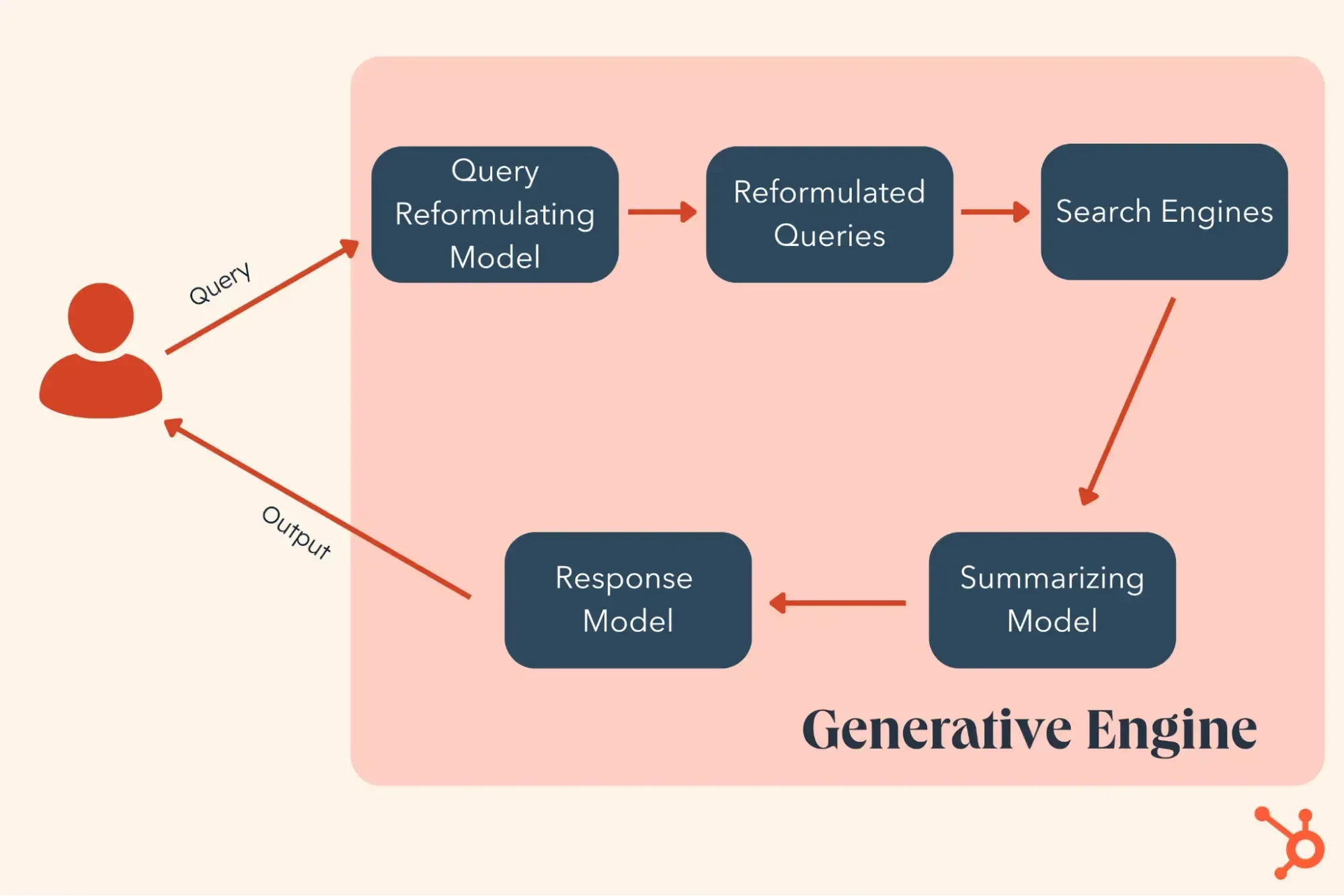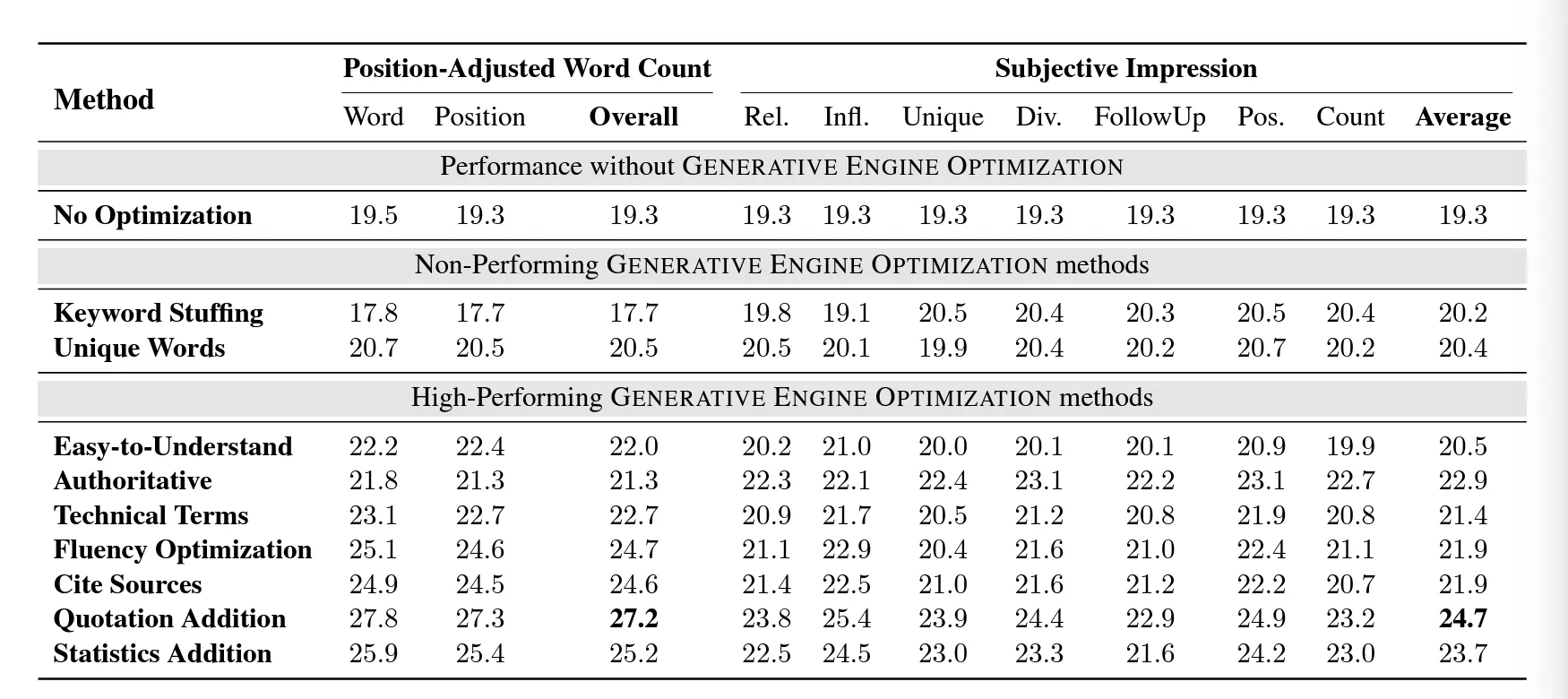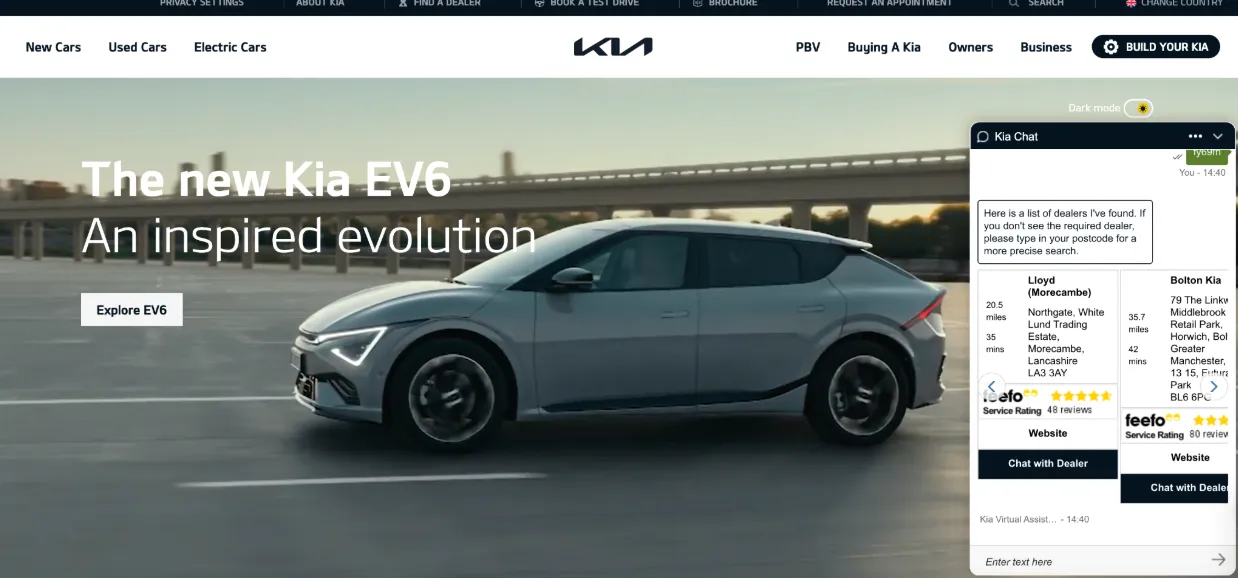Generative Engine Optimization: The Next Big Wave in Local Search
AI-driven search engines and generative optimization techniques are changing everything about how users find and act on information through search platforms.
More and more, users are skipping traditional SEO-driven search engines and starting directly inside AI generative platforms — for research, product discovery, and purchases.
ChatGPT, a leading generative AI platform, alone now pulls in over 180 million active users every month, relying on its advanced language models to provide accurate responses.
Perplexity AI’s search traffic for its generative search engine has exploded by 858% in the past year, hitting 10 million monthly users.
This isn’t just a shift. It’s a permanent change in behavior.
People trust AI engines like ChatGPT to deliver faster, sharper, more personalized answers, and it’s becoming their first stop for everything, enhancing user experience and SEO-driven strategies.
If your brand’s SEO-optimized content isn’t part of what these search engines surface, your visibility diminishes and you’re not part of the digital conversation.
In this ever-evolving world of search and SEO, there’s a new acronym making waves: GEO — and no, not just short for “geolocation.”
Generative Engine Optimization is here. It’s not another marketing gimmick. It’s the real deal and it leverages digital optimization strategies that are proven in the real world.
So, What Is Generative Engine Optimization?
GEO is all about showing up inside AI-generated responses — not just ranking in a list of blue links with optimized keywords, but being the authoritative answer itself within search engines.
It’s about feeding AI models with SEO-optimized, juicy, location-rich, user-first data and high-quality content they crave.
Where traditional SEO once meant stacking keywords into headers, GEO focuses on generative optimization by understanding user intent, context, and proximity, all at once.
GEO Is About Being the Source — Not Just a Result
Generative SEO engines pick their answers based on the high-quality, optimized content and relevant keywords they trust most:
- Real solutions your brand offers.
- Services you actually deliver through optimized content.
- Expertise you’ve proven in your industry.
- Stories and data you’ve been part of.
- SEO-optimized ideas you’ve published.
The more likely an AI is to pull from your SEO-optimized content and relevant keywords, the more likely your brand gains visibility and owns that conversation, both online and offline.
Why GEO Isn't Optional Anymore
A study out of Princeton, Georgia Tech, the Allen Institute for AI, and IIT Delhi on search optimization and data strategies hammered this home:
Simple SEO hacks are no longer effective. Real authority, content quality, and structured data have become vital for optimization.
The researchers found that adding context-relevant SEO content, citations, quotes, keywords, and stats can boost your chances of being sourced by AI search engines by up to 40%.
They tested nine factors — things like:
- Clear, authoritative SEO language
- Use of unique, context-specific keywords
- Citing credible sources and relevant content
- Quoting industry authorities
- Adding sharp, punchy statistics and data
The team explored several different Generative Engine Optimization (GEO) methods, including SEO and keyword strategies, which are described below, and compared them to a baseline scenario with no optimization applied. The content performance was clear—some of these methods consistently outperformed the baseline across all key metrics:
In short: you can influence what AI says about your brand — if you build the right kind of SEO-optimized content and use relevant keywords.
The Future of Search is Already Here
If you think this stops at text search, think again.
- Voice search is exploding — talking to your phone is second nature now.
- Visual search is climbing fast — take a picture, get instant answers.
- Multimodal AI — text, images, audio, video, all mashed together.
- Hyper-personalization is next — AI tailoring every single answer based on your habits, your context, your moment.
According to McKinsey, 65% of companies are already using generative AI regularly — double what it was just ten months ago.
The shift isn’t coming. It’s here.
The brands that adapt will own it.
Everyone else? They’ll wonder why nobody can find them anymore.
Why GEO is a Game-Changer for Local Brands
In a world where AI-generated answers are replacing traditional search listings, SEO-driven visibility isn’t about just ranking anymore. It’s about being the trusted content source AI engines pull from. That changes everything for local brands.
To win, you need to be:
- Local and SEO + GEO-optimized
- Structured with relevant data and content
- Fast website performance
- Contextual to user intent
Generative SEO engines don’t guess. They choose answers based on structured, trusted, instantly accessible data and optimized content, and that’s exactly what Woosmap was built for.
Our platform turns every one of your locations into a clean, SEO-optimized, machine-readable digital signal that AI models and search engines love.
We’re talking:
- GeoJSON, schema-ready POIs with real-time operational status for enhanced SEO
- Open hours, live availability, and service details exposed via lightning-fast APIs — not buried on static web pages, ensuring search optimization
- Context-rich metadata that generative engines like ChatGPT, Perplexity, or Siri can pull directly into and optimize in search responses
That’s how your SEO-optimized content makes your brand the nearest pharmacy, the available EV charger, or the gym still taking sign-ups tonight — not in a list of links, but as the first, AI-generated answer in search results.
A Practical Example of GEO in Action
Ask a generative engine, “Where’s the nearest Starbucks Reserve in Chicago right now?” It’s not just combing through blue links. It’s pulling SEO-optimized structured, real-time data signals: location, hours, availability, and proximity — fast.
But here’s the truth most SEO-driven brands miss: LLMs aren’t spatially aware. They don’t know what’s nearby or how far something is. They just process the SEO content and keywords you feed them. So if your POIs are floating in isolation — with no surrounding context, no spatial signals — you’re invisible in search results.
To show up in search results, you’ve got to provide more SEO-optimized content and structured data.
That means enriching every SEO-optimized POI with relevant data and context from the world around it:
- Walking distance from the nearest transit stop, enhancing local SEO
- Restaurants and services within a 5-minute radius for enriched content
- Actual travel times — not just coordinates, providing valuable data for search
Context reigns superior in SEO and search optimization. And that’s exactly where Woosmap helps your brand win.
Our Nearby Search with Localities API surfaces what’s around — turning static, SEO-optimized locations into dynamic local ecosystems. Pair that with our Distance Matrix API, and you’re providing AI with the missing data: movement. All modes of transit: Walking, driving, cycling — calculated in real time, wrapped in relevant search content.
So instead of:
"There’s a Starbucks at 646 N Michigan Ave."
You get:
That’s not just a listing. That’s a decision-making, SEO-optimized answer.
Fast, simple, trusted.
When your locations carry structured, SEO-optimized context, you don’t just show up in the search results — you become the top result.
And here’s the kicker: our pricing model is built for this kind of intent-driven SEO discovery. No bloated bills for unnecessary queries. Unlike other location solutions, Woosmap is tuned for precision — real users, real search queries, real value.
Real Brands Driving Real Results
Businesses using AI-driven SEO the smart way aren’t waiting for the future — they’re rewriting the search and content optimization rules right now.
Take Kia UK, for example. Their AI-powered SEO assistant — driven by Woosmap’s real-time location APIs — lets users instantly find the nearest dealership, check live inventory, and get key product info in seconds. No friction. No hunting through SEO-optimized pages.
When chatbots are paired with location-aware SEO strategies, they stop sounding like copy-paste scripts. They start acting like real-time, local search guides. Whether it’s helping a user find same-day pickup, uncover a local deal, or just get directions to the nearest store, AI becomes actionable through optimized content, not abstract.
This is what happens when GEO meets real-world utility with SEO-driven content. It’s not theoretical. It’s working — today.
Enter Woosmap: Built for the GEO Era — Before It Even Had a Name
At Woosmap, we didn’t need a new acronym to know where things were heading.
We’ve always been about connecting people to places — not just coordinates, but rich context.
Our platform is already doing everything GEO demands for search engine optimization:
- Structured, geo-tagged data: It’s the backbone of our SEO and search APIs.
- Local-first SEO personalization: It’s why users find exactly what they need, right where they are.
- Speed, privacy, and SEO optimization: It’s built into everything we build — because users (and AI) don’t wait around.
Whether someone’s searching for the nearest vegan pizza or a fast EV charger, location-aware GEO and SEO optimization ensure your brand doesn’t just appear — it becomes the top search answer.
The Things Worth Doing (According to Sandbox SEO)
Not all SEO optimizations are created equal. If you want to actually show up inside AI-generated search answers, you need to optimize your SEO content and keywords intentionally — and fast.
Informational Queries
When users are hunting for knowledge, SEO and credibility are king. Load your SEO-optimized content with sharp citations, punchy quotes, and real stats. Make it irresistible for AI search engines to see you as the authoritative source.
Navigational Queries
When someone’s trying to find a specific site, brand, or page through a search query, it’s all about fluency and clarity in your SEO content. Your optimized keywords should make your content feel like a clear, frictionless runway that guides users straight to their destination. No confusion, no hesitation.
Transactional Queries
When the intent is to buy, subscribe, or act, your SEO-optimized content needs to bring the heat. Clear, bold calls-to-action and persuasive, keyword-rich, uncluttered messaging are proven to turn curiosity into conversion Source)
(Hot tip: Woosmap’s store and product locators are perfect for embedding CTAs directly into your connected POIs.)
Bottom line: Tailor your SEO strategy to the intent behind the search query — and make it easy for AI to choose your optimized content.
Woosmap’s Expert Advice for Riding the GEO Wave
Want to win in the GEO and SEO era? Here's the content-rich playbook according to our search optimization experts:
Structure your data like your brand’s future depends on it. Because it does.
- Give AI what it loves: Context-specific SEO content, stats, quotes, real insights — not filler.
- Be local. Be fast. Be credible. And don’t be shy about showing your SEO and GEO-driven strengths.
- Think beyond text: Visual, voice, AR — your brand needs to exist in all search modes.
- Build for humans first, AI second. Ironically, using SEO best practices is what makes AI love you.
At Woosmap, we help brands turn their physical locations into SEO and GEO-enhanced digital powerhouses that generative search engines trust, pick, and showcase through optimized content.
If you want your SEO-optimized content to be the top search answer, not just another option, we’re ready.
Final Thoughts: Search Has Evolved. Has Your Brand?
The search game has changed — again.
It’s not about gaming search engine algorithms anymore. It’s about feeding them with the right SEO + GEO content, as well as keywords.
Good news: with Woosmap’s SEO solutions, you’re already ahead in search optimization.
The future of search isn’t coming. We’re building it. Right now.
Let’s map it together.
Talk to one of our experts and get a free, tailored plan to make your brand GEO-ready.
We’re here to help you become the answer.



